History
WAAC has been operating for over 35 years, officially beginning in 1985 as the Western Australian AIDS Council.
In the last four decades the HIV/AIDS landscape has continued to change significantly and WAAC’s role has been redefined again and again.
Today, we still provide much needed support to people living with HIV, but the focus is only Living Well, not dying with dignity, as it once was. Programs now educate a much larger proportion of the community on the importance of sexual health and healthy relationships.
The timeline below traces the history of WAAC, from the early 80s to today. We’ll continue to update this page with stories, images and more to come.
-
2025
WAAC TURNS 40!
While HIV remains at the heart of WAAC, the organisation continues to evolve to meet the everchanging needs of the communities we serve.
-
2024
FREEDOM CENTRE TURNS 30!
2024 marks 30 years since Freedom Centre was born in 1994 as a social space for young gay men particularly in light of the AIDS crisis of the time. Since then it has become a staple in the WA Queer community. Supporting LGBTIQA+ young people for three decades. To mark the occasion, Freedom invited all past and present clients, staff and volunteers to return for a Freedom Homecoming. Freedom also hosted a Queer Prom for current FC visitors and LGBTIQA+ young people aged 12-25.
-
2023
STEP FORWARD: FIGHT STIGMA CAMPAIGN LAUNCHED
In an aim to address stigma, WAAC launched a new campaign comparing HIV to other chronic health conditions to demonstrate the similarities in treatment and management, and the disparities in experiences of stigma and discrimination. The campaign was recognised on an national level.
-
2022
FREEDOM X COMMENCES
To support the needs of the Freedom Centre and the demand for LGBTIQA+ community development and support in Perth, Freedom Centre services expanded in the metro to include a Counsellors, Group Facilitator, Community Development Officer and Peer Educator Mentor.
-
2022
FREEDOM CENTRE MOVED FROM BRISBANE STREET, NORTHBRIDGE TO LEEDERVILLE
Freedom Centre moved to the current premises in Leederville and enjoys community support, regular visitors, dedicated volunteers and its safe space to support young people with diverse sexuality, gender and sex while retaining its identity as an LGBTIQA+ peer support model.
-
2021
WAAC REBRANDS
WAAC launched its new logo along with its 2021-2024 strategic plan.
-
2021
WA/PERTH SIGNED UP TO FAST-TRACK CITIES GLOBAL INITIATIVE
WA became the first state and Perth became only the second city in Australia to sign up to the Fast-Track Cities global initiative, aimed at getting to zero new HIV infections and zero AIDS-related deaths by 2030.
-
2021
WAAC AWARDED FUNDS TO DELIVER LGBTIQA+ REGIONAL PILOT
Freedom State commenced after successfully securing funding from the Mental Health Commission. Freedom State aims to build the capacity of communities to support LGBTIQA+ young people in Bunbury, Geraldton and Kalgoorlie through community development and counselling.
-
2020
M Clinic Turns 10
A significant milestone for WAAC – celebrating 10 years of operation of our M Clinic. M Clinic has been a vital Nurse-Led Sexual Health Clinic for Men who have sex with men, Trans People and Non-Binary People who have sex with each other.
-
2020
C-19 Continuing our Essential Services
The global pandemic of coronavirus disease 2019 (COVID-19), caused by severe acute respiratory syndrome coronavirus 2 (SARS-CoV-2), emerged in WA in the early months of 2020. WAAC developed a C-19 Business Continuity Plan and in conjunction and support from DOH, adapted its service provision to ensure it continued delivering all essential services, both from face to face with the community and remotely and online (Zooms, Teams, Teleconferences, Phones) from Working From Home environments.
-
2019
QIP Accredited Community Organisation
After 12 months of preparation, May 2019 saw WAAC complete its self-assessment stage for the QIC Health and Community Services Standards accreditation. Undergoing the self-assessment stage involved a thorough gap-analysis and an overhaul of our existing systems and practices to better improve service delivery for all target groups. We are also looking forward to the next stage of the accreditation process.
-
2019
KISS turns 20
KISS (Keep it Safe Summer) provides young people with education, information & resources throughout the summer months around sexual health, alcohol and other drug use. Each year our KISS team is at Leavers in Dunsborough keeping young people safe! The Impact of KISS program since 2014: 69 volunteer peer educators have been trained as part of the K.I.S.S project 56,798 safer sex packs have been distributed to leavers at official leavers week celebrations Volunteers have had 3717 conversations with leavers: 2392 about safe sex, 846 about alcohol and 479 about other substances
-
2019
Freedom Centre Turns 25
WAAC’s Freedom Centre celebrated 25 years of operation. Another vital drop-in and peer led program which supports LGBTQI youth in extending a safe and inclusive environment.
-
2018
MIPA – Meaningful Involvement of People Living with HIV
The Meaningful Involvement of People Living with HIV (MIPA) report and action plan was released on December 1, 2018. The MIPA report provides a framework that allows people living with HIV to have meaningful participation and contribution in relation to the services they receive from WAAC. This included seeking involvement in policy development, in particular with the consumer engagement policy, the establishment of our World AIDS Day working group, organising branding workshops and inviting community participation and community consultation via surveys on establishing relevant topics for treatment forums.
-
2018
Lotterywest IT Grant

In October, WAAC was successful in receiving the grant from Lotterywest. This provided the opportunity to carry out a much-needed IT upgrade, a branding review and the implementation of a Social Impact measurement system – all of which will have a positive impact on WAAC’s future.
-
2017
M Clinic PrEP-It Trial
M-Clinic successfully implemented the PrEPIT-WA trial as the lead clinical trial site with 723 PrEP appointments.
-
2017
Inclusive Education WA
IEWA was rebranded from Safe Schools Coalition WA. IEWA focuses on building the knowledge, confidence and capacity of school staff to improve learning environments for same sex attracted, intersex and gender diverse (SSAIGD) students.
-
2017
WAAC Welcomes PrEP Trial
A partnership between the WA AIDS Council, the Department of Health and the Kirby Institute. We were thrilled that the Government confirmed funding for a WA PrEP demonstration project for 2,000 Western Australians. WAAC had pushed this for what seems like forever, and the result is better than we dared to dream. The demonstration project will help eliminate new HIV transmission as we aim for zero targets.
-
2017
U=U Forum
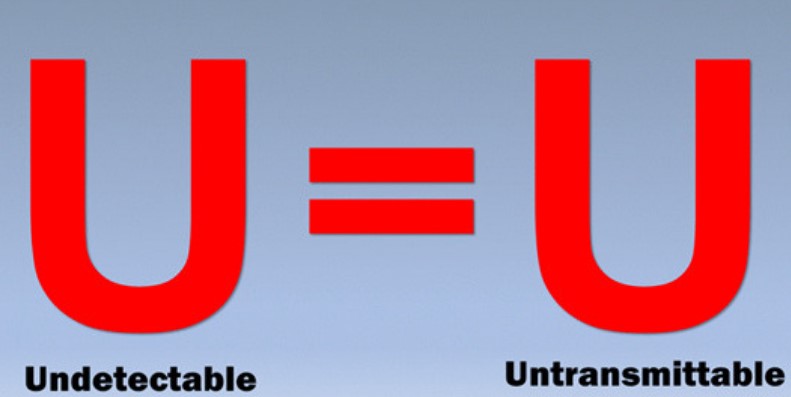
Hosted by WAAC in collaboration with Dynamix and TIM, Bruce Richman from the USA spoke about undetectable equals untransmittable. Attended by 48 people from the HIV positive community, and health/community services
-
2017
This is what HIV looks like in 2017
‘This is what HIV looks like in 2017’ campaign focused on PLHIV to advocate equality and non-discrimination. 3 billboards were displayed across Perth, reaching an estimated 610,400 people, plus a full-page ad in the West Australian.
-
2016
Womens Forum
June 2016, WAAC hosted a very successful event for women living with HIV and women who work as health professionals in the sector. In attendance were 15 women living with HIV (WLHIV), 11 health professionals and three WA AIDS Council staff members.
-
2015
WA AIDS Turns 30

The WA AIDS Council celebrated 30 years of supporting the community with a number of events. A formal event was hosted at Parliament House on September 30, followed by a community event at the WA Ballet Centre 10 days later.
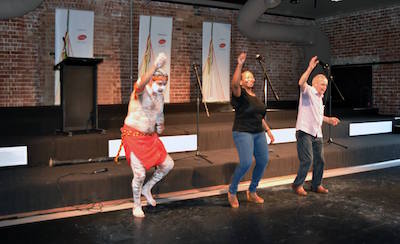
-
2014
Reconciliation Launched

In March, the Council completed and officially launched its Reconciliation Action Plan. It is our hope that Aboriginal and Torres Strait Islander peoples will connect with our services in a culturally secure manner and to strengthen our solid foundation of respect, relationships and opportunities with Aboriginal and Torres Strait Islander peoples and health organisations.
-
2014
WA Well Represented in Melbourne
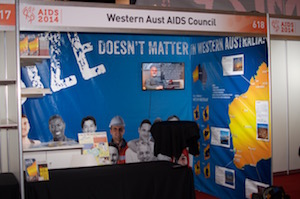
A large contingent from the Western Australian Blood Borne Virus sector landed in Melbourne in July for the 20th International AIDS Conference. Staff from the WA AIDS Council designed, constructed and manned an exhibition in the Global Village, alongside staff from the WA Department of Health and partner organisations; while others attended the full conference program. The Council was also able to sponsor 6 members of the PLHIV community to travel and attend the conference.
-
2014
M Clinic Reaches Milestone

In 2014, M Clinic welcomed its 3,000 unique client through its doors, in just its 4th year of operation.
-
2014
Sex in Other Cities Receives a Makeover
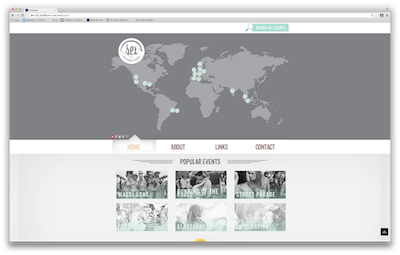
The Sex in Other Cities brand was overhauled in the first half of 2014, with a new logo, style guide, advertising collateral, Facebook page and website. The new strategy for the brand is to focus less on STI’s and the risks apparent at various places around the world and more on fun, parties, festivals and popular city destinations. The website showcases a number of festivals from around the world and offers tips and suggestions to make the most of them. The aim is to provide travellers with the useful information they are already seeking, and then provide the safe sex message as a secondary consideration. The strategy is based on capturing the attention of those considering a trip to such a festival, and aims to reach them when Internet searches are conducted. Website traffic increased by 636% after the site was redesigned.
-
2013
Clinical Services takes SHAPE

Following a successful tender process, the Clinical Services team commenced delivering the SHAPE (Supporting Health and Personal Empowerment) program. This program is an outreach service for people living with HIV that face significant complex issues.
-
2013
A Plan for Reconciliation
The Council takes the first steps to establishing a Reconciliation Action Plan.
-
2012
M Clinic Expands
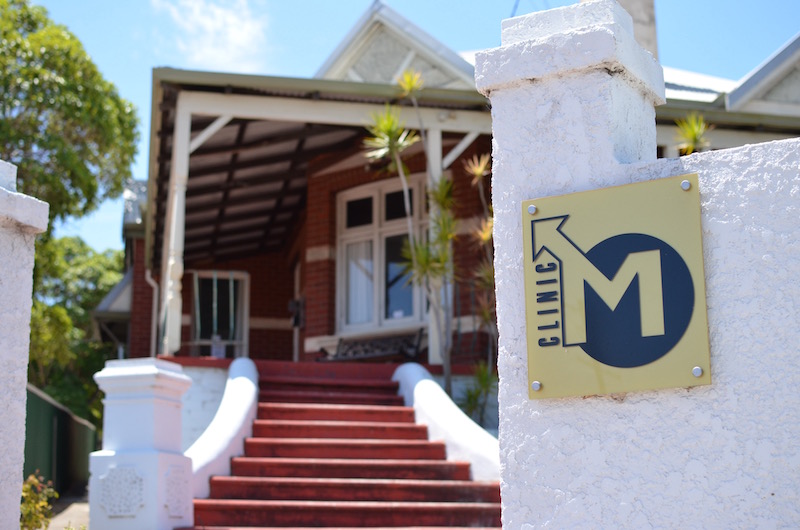
After its first, highly successful year of operation, M Clinic relocated to larger premises in West Perth. Testing was also conducted weekly at Perth Steamworks.
-
2011
NSEP Finds a Fixed Home
After years of negotiation, the Needle and Syringe Exchange program opens a fixed site premise in Fremantle. Service delivery to this important area immediately increases by 28.4% as client prefer the privacy of a fixed location over a mobile van.
-
2011
Fighting Homophobia in Schools
The Council sponsored Dr Tiffany Jones to complete her PhD which explored the correlation between the absence of defined anti-homophobic and transphobic bullying policies in schools and suicidal ideation and other mental health issues in young LGBTIQ people.
-
2011
ExSIGHT
In 2011, funding was obtained to undertake an arts-based project called ExSIGHT, culminating in a collection of original works created by young people at the Freedom Centre. Local artists Martin Wills and Peter Farmer hosted a series of art workshops for young people.
-
2010
M Clinic Opens
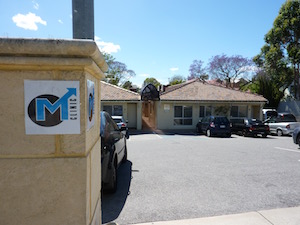
M Clinic, the first sexual health clinic of its kind in Australia, catering exclusively for gay and other men who have sex with men, opened in West Leederville. The peer-based model provides a safe peer/clinician co-lead environment for men to be tested for the full range of STIs.
-
2009
The Body of Knowledge Exhibition
The Council, in partnership with Positive Women Victoria, hosted the Body of Knowledge photographic exhibition during Sexual Health Week. The exhibition was aimed at reducing stigma and discrimination for people, particularly women, living with HIV.
-
2008
Safe Sex No Regrets Campaign
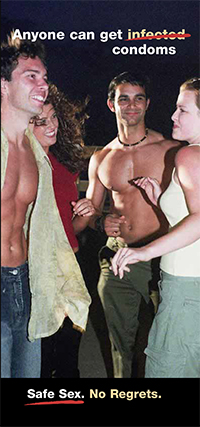
Between December 2007 and February 2008, WA people saw sexual health advertisements on television and in cinemas for the first time in over a decade. The campaign was originally conceived by NSW Health and featured a strong condom awareness and reinforcement message for heterosexual people aged less than 30 years and homosexually active men less than 45 years. It focussed on STIs, namely Chlamydia, gonorrhoea, herpes, syphilis and HIV. Gemma Crawford coordinated the implementation and the evaluation of the campaign and Nadine Toussaint created a website to complement the advertisements, resources and written materials. The evaluation showed there was TV high recall with a very high proportion stating that the campaign was believable. Other information gathered showed that there were differences regarding between people in relationships versus those not in relationships
-
2007
The National Australia Bank Volunteer Award
The WA AIDS Council volunteer program won the prestigious 2007 National Australia Bank Volunteer Award in the large organisation category in WA. This was in recognition for its innovative approach to recruitment and management of its volunteers such as recruiting volunteers through universities and other tertiary institutions.
-
2007
Sex in Other Cities Takes Flight

Social marketing via in-flight magazines (Tiger, Skippers, Air North and Skywest), brochures and posters at airports and a specially designed website (www.sexinothercities.com.au) presented key messages for people to take and use condoms when they are overseas and undertake HIV and STI testing done before and after travelling.
-
2007
Love Bug Tour
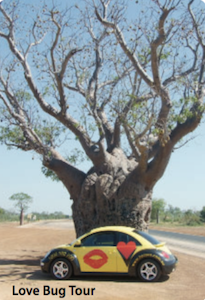
Tenille Wightman and Gail Jones participated in the Sexual Health Week ‘Love Bug Tour’ in collaboration with the Kimberly Aboriginal Medical Service, Pilbara Population Health and Midwest Gascoyne Population Health. Sponsored by Novartis, the purpose of the two week long Love Bug tour was to take the safe sex message to rural and remote communities in a fun, creative way, providing interactive education opportunities for local people and information and support for health professionals. Three VW ‘Love Bugs’ drove over 6000 kilometres from Perth to the Midwest and the Northwest to provide sexual health message. Aboriginal and non Aboriginal communities, schools and health services were targeted.
-
2007
First 5 Year Contract Signed
For the first time, the WA AIDS Council received a five year contract from the WA Department of Health to deliver core HIV/AIDS services. This has meant that the Council was able to undertake long term planning with an emphasis on providing comprehensive and integrated programs, setting appropriate goals and making adequate provision for monitoring and evaluation.
-
2006
First 21 Years Documented
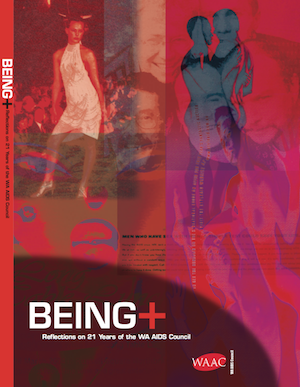
The book BEING +: Reflections on Twenty One Years of the WA AIDS Council was launched by Dr Neale Fong, the Director General of Health in WA and Ian Rankin, the President of the Australian Federation of AIDS Organisations in November 2006. Funded by Lotterywest, written by Chloe Britton and sourced from archival material, interviews with key people and information garnered at a community forum, it serves as a social commentary on the enormous changes seen during the HIV/AIDS epidemic in WA.
-
2006
Life Coaching Pilot Project
The WA AIDS Council conducted a pilot Life Coaching project with the goal to assist HIV positive people to identify goals that would improve their quality of life and provide them with the skills to achieve those goals. Staff of the department received intensive training to become life coaches and each was matched with a HIV positive person with whom they had not had previous contact.
-
2006
Changes to the Epidemic
For the first time in the history of HIV in WA, heterosexual notifications rival homosexual notifications, led by a rise in women acquiring HIV in neighbouring high prevalence countries and the Aboriginal population.
-
2005
The WA AIDS Council’s 20th Anniversary
The theme ‘Until There’s a Cure – ‘Remembrance, Reflection and Celebration’ was chosen for the 20th Anniversary events which included a Film Festival held during the PRIDE month, a retrospective exhibition and a ‘Back to WAAC’ function for ex-staff and volunteers to catch up with current staff and volunteers. A written history of the WA AIDS Council was launched in 2006.
-
2005
CyberReach-ing a New Audience
For the first time, outreach was conducted online. CyberReach developed, trialled and evaluated the protocols and strategies for online peer-based internet outreach and health promotion to same – sex attracted young people and other men who have sex with men, present within the internet chat room setting.
-
2004
Rigour and Vigour Conference
The WA AIDS Council, in conjunction with the WA Centre for Health Promotion Research, Curtin University and AFAO presented “Rigour and Vigour – Directions in HIV Prevention” on November 27th 2004. Keynote speakers included Don Baxter from AFAO, David Wilson from the Centre of International Health (Curtin), Jeanne Ellard and Henrike Körner from the National Centre in HIV Social Research (UNSW) and Michael Hurley and Mark Saunders from the Australian Research Centre in Sex, Health and Society (LaTrobe). Local programs and activities were showcased and excellent links were forged with HIV/AIDS research counterparts in the eastern states.
-
2004
ATSI Advisory Committee
The WA AIDS Council established the Aboriginal and Torres Strait Islander Advisory Committee, chaired by Daniel McAullay, a member of the Board of Management. It had broad membership of people with expertise, skills and interest in Aboriginal sexual health and related issues and provided advice to the Board and Management regarding service delivery to Aboriginal people. The committee comprised of people from HDWA, Derbarl Yerrigan, Office of Aboriginal Health, Hepatitis Council, the Department of Justice, Department for Community Development, Edith Cowan University and the Education Department as well as the WAAC project officers. The commitee meetings provided an excellent opportunity for networking, discussing issues of mutual concern and advocating and lobbying.
-
2004
Same Sky Project Launches
Same Sky was a collaboration between the Freedom Centre, the WA AIDS Council, GLCS and P Flag to assist same sex attracted young people living in rural areas to develop their resilience and to build capacity within local communities to deal with the issues of same sax attraction. It was funded by the Commonwealth Department of Health and Ageing. Jaye Edwards, the Same Sky project officer, was based in Bunbury but had close links with Albany. Although Bunbury, Albany, Geraldton and Kalgoorlie were the targeted towns for this intervention, a number of other areas sourced information and material. The Bunbury Freedom Centre opened and was attended by a number of young people. There were also a number of service providers in Geraldton with serious concerns about some of their young people and have indicated they would be in a position to support a Freedom Centre in Geraldton.
-
2003
HIV on the Rise Again
Towards the end of 2003, it became clear that WA was seeing an increase in the number of new diagnoses of HIV, particularly amongst men who have sex with men, following the trend in the east coast. Although not always possible to prove, it also appeared that some of these new diagnoses were new infections. This led to a concerted effort and campaign to revitalise the “condom culture” in WA and encourage people at risk to test for HIV and other STIs. This was enhanced by a collaboration with FPWA to open a men’s sexual health clinic to enhance the clinics operated by WAAC at Perth Steamworks and Beaufort 565.
-
2003
Crime Prevention Project:
Simon Yam undertook this project in collaboration with the WA Police Service, City of Bayswater and the City of Stirling with the goal of creating a supportive environment for men who use Beats. It aimed to enhance community amenity by preventing or reducing crime at Beats – through information and awareness-raising about consequences of using Beats and for crime perpetrated against men to be reported to the Police. In addition, it provided sexual diversity and sensitivity training to the Police, Local Government Rangers and security guards so that they were better equipped to deal with men using Beats. The WA AIDS Council to provided safe sex information to men choosing to use Beats and also provided referrals for men wishing to discuss any issues related to their Beat use or medical advice and information about alternative venues.
-
2002
FC Awarded
The Freedom Centre is awarded the group award in the Youth Citizenship Awards for 2002 and also receives a two year Commonwealth grant and a two year Lotteries Commission Grant to provide services and capacity building to same sex attracted youth.
-
2002
K.I.S.S. Supports Leavers with a Kiss
WAAC developed a targeted campaign fpr young people – K.I.S.S – Keep it Safe Summer – for “leavers” and attended end of year celebrations at Rottnest and the south-west, concerts such as the Big Day Out and orientation days. The outreach program was highly successful because it highlighted safety around sex, alcohol and drug use.
-
2001
HAPAN Created
A new advocacy group, HIV/AIDS Peer Advisory Network (HAPAN), was established and Positively Social provided opportunities for people living with HIV to get together in a social environment.
-
2001
Testing Spreads to SOP Venues
Health clinics offering testing, vaccinations, information and education are opened within sex-on-premises venues, staffed by sessional doctors and WAAC staff.
-
2000
The Indigenous Project Finds Gaps
The Indigenous Project, funded for one year only, has identified many needs for young gay, sistergirl and transgender indigenous people. WAAC advocated for funding to continue this work.
-
2000
Health Enhancement Team
The development of a team named the “Health Enhancement Team” comprising staff from Support services, Peer Education and the Women’s Project was developed to ameliorate the social isolation felt by positive people. This cross-department team redeveloped WAAC’s publications, organised a social program and promoted health enhancement activities such as the use of complementary therapies.
-
2000
New NSEP Resources
The Council purchased another mobile van for the Needle and Syringe Exchange Program, and the employment of additional staff increased the number of sites attended by the NSEP. This was made possible through an allocation of COAG funds.
-
1999
Here for Life
Importantly, 1999/2000 saw the fruition of three years of work resulting in the implementation of two quite diverse initiatives. Following on from the success of the ‘Here for Life’ Youth Sexuality Project, the needs of vulnerable young people with same sex attractions were acknowledged with the achievement of long term funding for a dedicated youth project.
-
1998
Working with Partners
A new Strategic Plan framework set the agenda for the work of the next three years – acknowledging and extending our work in HIV/AIDS, Hepatitis C, Sexually Transmissible Infections and Mental Health. Environmental and health services change were a key priority of 1998/99. A number of successes occurred in our attempt to create supportive environments for health. The development and implementation of collaborative arrangements with the Hepatitis C Council of WA and the Ministry of Justice in the provision of education for incarcerated populations in WA was a great step forward. Our work is making a difference in the prison system – challenging and changing attitudes around harm minimisation, and beginning the process of long term change. Importantly, this year saw the development of a strong response to the needs of women living with HIV in WA. The work of the Council and our partners in the Government and non-Government sectors realised the beginning of a good process to engage with women living with HIV in metro and rural/remote areas.
-
1998
Love and Relationships
Being HIV positive has an impact on close relationships like no other disease. WAAC has tried to address the issues arising in different kinds of relationships by offering discussion groups for partners in positive/negative relationships, by assisting with a ‘personals’ page for readers of Positive Living WA and by offering counselling for couples and individuals.
-
1998
STYLEAID brings the Glamour
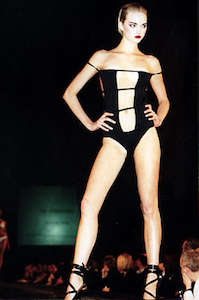
STYLEAID was introduced in 1998 and quickly established itself as Perth’s premier fashion fundraiser. The first STYLEAID was held in the Grand Ballroom at the Hyatt Hotel. Designers showcased included Morrissey, Ruth Tarvydas, Ray Costarella and Alex Perry.

-
1998
Incredible Generosity Creates Dilemma
WAAC received a bequest of $252,000 in February 1998 from the estates of two men, Mr Donald Browne and Mr Russell Watson. When the two men made their wills in August 1991, the number of homosexual men dying from AIDS in Western Australia was at its peak and the will specified the money be used for the provision of hospice facilities for homosexual men, including buying a building if necessary. By 1998 the number of men dying was dramatically lower and WAAC grappled with the issue of what was the best use for the money. WAAC finally got a Supreme Court order to change the use of the Bequest and is now committed to using the remainder of the money to implement a range of services for HIV+ homosexual men that aim to maintain health and well being.
-
1997
HIV and Rural Australia
WAAC used an Australian Federation of AIDS Organisation (AFAO) grant to survey country doctors and country people living with HIV/AIDS to discover their needs in 1997. Rural projects have included major centres such as Bunbury, Albany, Carnarvon, Geraldton, Kalgoorlie and Indigenous communities around Western Australia. The key has been to keep people linked with peers, if not in the same town, then at least in a similar situation.
-
1996
From Palliative Care to Counselling
The nature of WAAC’s core work has changed significantly since the availability of anti-retroviral treatments and combination therapies. The focus of Positive Services has been emotional, financial and health support rather than the personal and physical help provided in the first decade of AIDS in WA.
-
1996
Science finds HAART
Highly Active Antiretroviral Treatments are discovered and successfully trialled. These combination therapy defends against resistance by suppressing HIV replication as much as possible, thus reducing the potential pool of spontaneous resistance mutations. This 3-drug therapy was quickly incorporated into clinical practice and rapidly showed impressive benefit with a 60% to 80% decline in rates of AIDS, death, and hospitalisation.
-
1994
Steps toward Freedom (Centre)

Freedom Centre started out in 1994 as a part of the “Other Voices” program in Gay Men’s Education at the WA AIDS Council (WAAC). It began to provide and ongoing social space for the young men that participated in the gay education courses. It was a space to provide the young men with social opportunities outside of the “scene”. Over time through the Youth Sexuality Project run by WAAC, the Freedom Centre became an all genders space and got its own premises and recurrent funding.
-
1993
Positive Women
By 1993 the Council was seeing increasing numbers of women contacting Support Services. Many of these women had children and their main worries were to do with finances while caring for their children. Lack of finances is often a major concern for HIV positive women with children. On an emotional and psychological level, parents needed to make provisions for the future care of children, looking to the long term health consequences of HIV. The Council began to reflect on changes needed to provide for HIV positive women and women with positive children.
-
1993
James House
“James House offered accommodation and support to those who felt lonely, isolated or in dire need of housing. Over the time of my involvement, many faces passed through those doors. I always remember the house being tidied up and given a face lift in an attempt to bring some pride into those that resided there. This was after the place was emptied out more than once with removalist trucks taking all the house hold items. Amid the frustration was also disbelief and much laughter. We finished up bolting the TV to the floor!” Marie-Elise Allen.
-
1993
Accomodation Becomes a Priority
In the early 1990s the focus for funding turned to providing accommodation and financial relief for people living with HIV and AIDS. Many people who had received an early diagnosis did not expect to live long, and spent savings without imagining that they might need to plan for the future. By 1993 the people of the Council began working towards their vision of providing supportive accommodation. Eventually WAAC was able to set up James House for a brief period.
-
1993
Drugs
Australian numbers of HIV transmission among people who inject drugs are significantly lower than those in the United States, a success for Australian AIDS councils. Western Australian strategies made a significant contribution to that success. Early strategies included peer education, which has proven to be the most effective way of encouraging safer behaviour when injecting drugs. Providing needle and syringe exchange has brought significant controversy to the Council, however the benefits to users and the general community, by controlling infection by this method of transmission, have been well worth the difficult moments.
-
1993
The Condom Message Hits Home

“With young guys in those days because they were just becoming sexually active so it was just like, “Well, now that I’m choosing to have sex, this is just something I need to do,” Mark Reid. The lesson about condoms certainly hit home for older gay men when they noticed the men missing from their community. The loss of lives in this community in the early eighties has been likened by some survivors to living through war – some talk about the Post Traumatic Stress associated with losing multiple friends.
-
1992
The Right To Privacy
The rights of HIV positive people to confidentiality were put on trial both in the court and in the media in 1992 when Howard Sattler prepared listeners for his announcement of the name of a particular Perth man who had allegedly infected Princess Jah. WAAC staff were alerted by a journalist who was seeking a comment on the story. Within twenty four hours WAAC had prevented the public radio announcement by law.
-
1992
A Woman's Perspective
“When I was diagnosed with HIV in 1986 I started doing volunteer work at WAAC. They had a support group then called Body Positive, which was run by a chaplain and Penny Lipscombe, a clinical psychologist… I was pretty much the only woman in the group. There were pros and cons to that. For instance when WAAC sent two people to the first National AIDS Conference in Hobart – I was guaranteed the women’s spot but if I brought up the issue of vaginal thrush at the group – the men would all say ‘What’s a vagina?'”, Diane.
-
1992
Violence and the Blood Rule
HIV led to the creation of the Blood Rule in all sports. The significant impact of the Blood Rule was that rather than demanding HIV testing and excluding HIV positive people form sports, people adjusted to the idea that anyone might be HIV positive and appear healthy and athletic. When the question of violent contact and HIV transmission came up, it was a major concern for prisons. In Western Australia HIV positive prisoners were held in a segregated area in a maximum security prison, regardless of the seriousness of their offence. Prison guards, aware of potential issues with sex, rape, violence and drugs in prisons, sought training on risk management. WAAC has provided prison outreach to HIV positive people and training to prison staff since the early 1990s.
-
1992
Positive Women Step Forward

From the outset the majority of people who were HIV positive were men. As increasing numbers of positive women became involved with the Council there was a need for specific support to assist these women as most of the medical information that doctors were working with was focussed on men.
-
1991
F***erware Parties Push the Boundaries

Whilst it was more difficult to take creative risks with providing safe sex messages in public, private parties were another story. WAAC promoted ‘fuckerware’ parties in which sexual health educators would present safe sex information and products to small groups of friends.
-
1990
Death and Loss
The final experiences of some people who had died as a result of the virus were not acknowledged by shamed and shell-shocked families and friends. Some families welcomed volunteers and members of the Council, others made it clear they would not be welcome. Some funerals included cryptic eulogies referring to cancers or other diseases. After some negotiation with health authorities, families were able to ensure that AIDS was not written as the cause of death.
-
1990
Too Sexy to be Educational
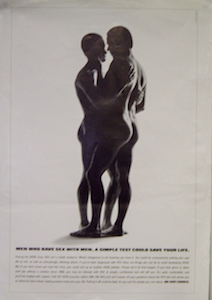
“Readers of the West Australian choked on their morning muesli on 5th of October [1991] when they stared at a full page advertisement of two naked men embracing…” Debate raged about the appropriateness of safe sex advertising, and meanwhile WAAC campaigns continued to push boundaries, sometimes unsuccessfully. The explicit safe sex imagery of the first safe sex summer campaign raised the ire of anti-pornography wowsers who were eventually successful in having the brochure censored.
-
1990
Outreaching the Hard-to-Reach
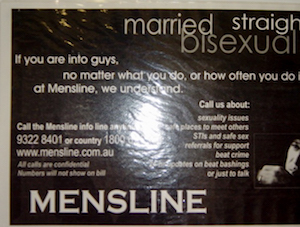
WAAC’s gay men’s health workers have had to come up with innovative ways of providing information and support about sexual identities and safe sex. WAAC opened a bisexual men’s phone line and in the first two days took over fifty calls. [In 1990] the beat outreach workers would speak with more than 1000 men.
-
1990
Critics
Despite the benefits of the public speaking programme it was not without its critics. When in 1990 HIV positive speaker Luke Coomey spoke to high school students in North Albany Senior High School a scandalised parent withdrew her son from the school.
-
1989
Government Funding Arrives Just in Time
In these early days, as the Council existed off fundraised money from the gay community, AIDS education for gay men had more than its measure of cheeky controversy. 1986 saw the Council begin receiving government funding for the first time and there were seventeen people with AIDS in Western Australia. It was a significant relief when in 1989 WAAC received much enhanced funding with the development of the first National HIV AIDS Strategy. The new funding would provide for the growing burden of increased HIV/AIDS diagnoses of the 1990s.
-
1988
Remembrance

By 1988, 29 people were living with AIDS in WA and a further 31 had died. Death, remembrance, grief and loss became more salient themes for those affected by HIV. Perth participated in its first International Candlelight Vigil which in subsequent years emerged as a potent community ritual to publicly acknowledge the impact of AIDS. “We started the Candlelight Vigils in the gardens of St Mary’s Cathedral outside Royal Perth Hospital so the people who were in Ward 10 could sit on the balcony and see. The third year it had become so big that we couldn’t have it in the grounds so we met there and we walked down to Forrest Place. For two or three years we filled the whole of Forrest Place with people”, Mark Reid.
-
1988
Fundraising

The gay community got behind the AIDS crisis, using their existing social networks to provide fun occasions with a cover charge which went straight to WAAC. The community held Rainbow Parties, BlockAIDS Black Dance Parties, World AIDS Day events and even “The Ita Buttrose Gala Dinner Bash”
-
1988
Sex on Site
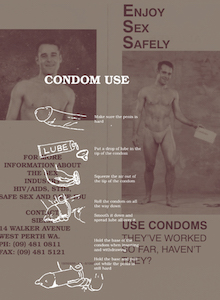
WA AIDS Council worked closely with sex-on-premises venues to provide information and safe sex materials. “The initial response of the authorities in San Francisco and New York was to close down the bath-houses and saunas where it was felt that uncontrollable orgies would take place… and that these places were seen as a kind of breeding ground for the AIDS virus. Authorities in Australia, to give them credit, realised that the saunas in fact provided a marvellous opportunity for safe sex education. The AIDS Council has provided condoms to that sex on site venue since 1988…”
-
1987
Education
With AIDS infecting sexually active young people across Australia, there was immediate debate and discussion about sex education in schools. The WA AIDS Council offered education services to schools, the most popular of which were the personal perspectives of HIV positive people. The positive perspectives talks were key to explaining the truth about risk and transmission, and provided religious schools with a compromise in terms of covering the major issues regarding AIDS and adhering to religious principles.
-
1987
Early Treatments
Treatments for HIV were not available until 1987. When American authorities found that the drug azidothymidine (AZT) worked to combat the virus itself, trials began around the world. Doses of this drug were experimental at the start and serious side effects resulted.
-
1987
Early Treatments
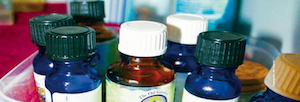
Some HIV positive people chose not to go on treatments after seeing the impact of early treatment regimes on their HIV positive friends. The difficult aspect of trialling new drugs was balancing the impact on the immune system of medicines which caused side effects which then required more drugs to treat.
-
1986
Peer Support
The Perth Body Positive Group began early in 1986. The group was set up and facilitated by local people with HIV and AIDS. The main areas this group would focus on were stress management, health maintenance, treatment options, grief and loss. Future groups and programmes focussed on similar issues and maintained a peer focus.
-
1986
First Steps
In the space of three years the gay community in Perth was transformed. Moral debate, medical confusion and public panic defined the early years of the virus. As the WA AIDS Council grew, new challenges of funding, legal problems and community disintegration loomed. With changes to school policies AIDS fostered a generation of sexually informed and empowered young people of the eighties. “The advent of AIDS may turn out to be the most significant event of our lifetime”, Stuart Craigen.
-
1986
First Steps
AIDS Helpline took six thousand calls about ear piercing, toilet sharing and mosquitoes in its first two days, reflecting the hysteria and confusion of the times.
-
1986
First Steps
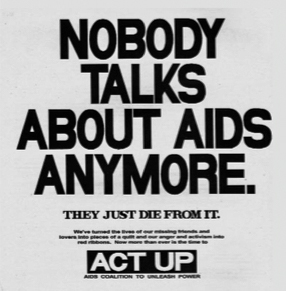
In these times before the internet, the need for information was paramount. The first responsibility of WAAC to Western Australians was to find, create and update the information that would answer all the common questions. Many people were too afraid to ask doctors about HIV/AIDS, and so many people in the early ‘risk groups’ depended on rumour and supposition. When the AIDS Helpline, later the AIDSline, was established Western Australians took the opportunity to ask every possible question
-
1985
Inclusivity
One of the first ways WAAC tried to achieve inclusivity was to implement an organisational structure which provided for ‘community representatives’. These positions were left deliberately ambiguous with the notion that the communities affected by AIDS were bound to change over time. “In my opinion WAAC stood apart from other AIDS agencies in the rest of Australia because it kept a broad community base to the AIDS response. All the at-risk groups were represented not just the gay community. For instance Peter Jordan, a social worker and lecturer at WAIT represented people with haemophilia. The appointment of Michele Kosky reflected the Board’s desire for a more general community approach’, Maxine Drake.
-
1985
Community
The definition and redefinition of the HIV/AIDS affected community has been the focus of internal conflict over the years. The Council has always had inclusivity in mind. Revisiting issues of access and equity as one of their core principles, WAAC has tried many different ways of ensuring inclusivity. From the outset the council was committed to a broad agenda of community education and support. Penny Lipscombe and Charles Watson from the Health Department; David Lamb, Des Perry, Victor Francis and Tony Whelan from the gay community; and Peter Jordan from the haemophilia community were some of those who collaborated in the inclusiveness of the Council’s direction.
-
1985
WAAC is born

The WA AIDS Council (WAAC) was initially established in May 1985. After a series of public meetings called by CAMP, GAGs (Gay Activities Group) and other groups, the community decided that it was necessary to create an independent organisation to focus on AIDS – the WA AIDS Council. WAAC was initially staffed by three people and funded by GAGs.
-
1985
The Gay Community Responds
Western Australian gay community groups were quick to respond and eager to take responsibility both for preventing the spread of AIDS and presenting another side to the much discussed ‘gay culture’.” There was a group in Perth called GAGS that decided this was a health problem that we really needed to address. basically they put their money into establishing the AIDS Council and did a lot of work with – well, what then happened, from my memory, is the AIDS Bureau was established through the Health Department and the AIDS Council was established”, Mark Reid.
-
1984
Haemophilia
Thirty percent of haemophiliacs who received blood products through the blood supply between 1980 and 1984 received contaminated blood and acquired HIV. In the period of hysteria and homophobia surrounding the initial spread of the virus. Infected haemophiliacs were subjected to homophobia as the public identity of AIDS was so firmly attached to homosexuality. By the end of 1984 the virus leading to AIDS was identified, and modes of transmission, including the blood transfusions, were clarified. In Western Australia the Haemophilia Foundation worked closely with WAAC from its inception, with family members of haemophiliacs often becoming volunteers.
-
1984
Guilt and Blame
People across Perth and Western Australia, both within and outside the gay community, were shocked and moved by media presentations of the horrific images of early infection. The rising numbers of deaths, the powerlessness of medical professionals and soon the infection of heterosexual men, women and children involved all Australians in the crisis. “After watching TV one evening and hearing of the death of a young girl called Holly in Sydney, I became very passionate about doing something and becoming involved in HIV/AIDS support and education in the community”, Marie Elise Allen.
-
1983
Ward 10 and the Medical Response 2
“In 1983 the first patient was flown home from America to die here. He went into Ward 10A and it was diabolical! He had elderly parents in their 80’s and we couldn’t tell them what was actually wrong with him. Administration were there all the time asking us if everything was alright and we had husbands ringing up to say they didn’t want their wives (the nurses) to work with AIDS patients. The nurses that would work with the patient were triple gowning up – putting on 3 of everything: gloves, gown and masks! It was bizarre”, Jane Grieve, Nurse.
-
1983
Ward 10 and the Medical Response
In Western Australia people diagnosed with AIDS were segregated in Ward 10A of Royal Perth Hospital. The windows of the ward overlooked the Catholic Cathedral, St. Mary’s. Contact with AIDS patients was limited and with general confusion and lack of information about the disease nurses and doctors were often unable to help families understand the situation.
-
1983
Pioneers
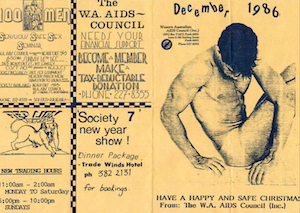
In 1983, Des Perry, who would later become coordinator of the AIDS Council, distributed Australia’s first safe sex information to gay men in Connections nightclub.
-
1983
Seeking the Truth

The early years of the epidemic were characterised by fear, confusion and rumour. Reliable, up to date information was difficult to find. “No one actually suspected the magnitude of the epidemic that was in the making. However, evidence of the gathering storm was starting to arrive”, Stuart Craigen. Worried members of the gay community who had seen television and magazine reports about ‘Gay Related Immune Deficiency’ (GRID) began to demand information.
-
1983
HIV Reaches Perth
Soon men were being admitted to hospitals in Perth. The first, whose diagnosis was still a mystery, arrived in Royal Perth Hospital in 1983. With no information, some disbelief and little discussion the virus made its way around the state. “We didn’t have a lot of information in those days. It was really new and very, you know, it was something we just didn’t have a lot of information about”, Mark Reid.
-
1981
The Gay Plague
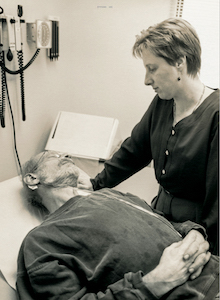
In 1981, when the epidemic was in its early stages, the illness was a medical mystery. No one knew the condition which would come to be known as AIDS (Acquired Immune Deficiency Syndrome), caused by the Human Immunodeficiency Virus (HIV). Epidemiologists, specialists studying how diseases spread, theorised that this curious immune condition was contagious but were not yet able to determine how it might be transmitted. Some speculated about the ‘gay lifestyle’, promiscuity, party drugs and known sexually transmissible infections. 1981 was the year the world first became aware of what would later be known as AIDS. Sandwiched somewhere between dengue fever and measles, a medical report bleakly noted that five young gay men had strangely depleted immune systems.
